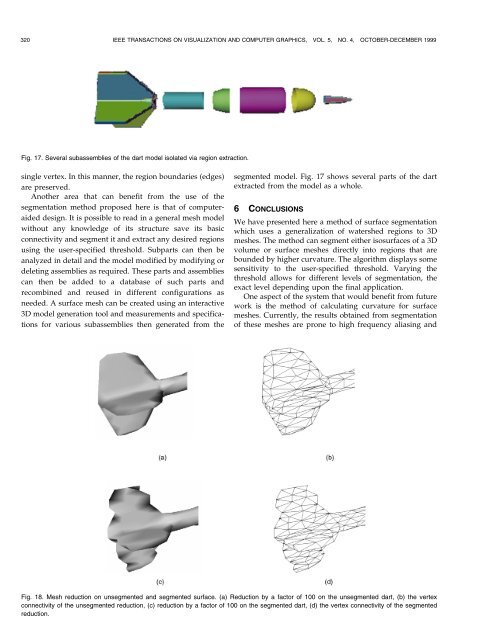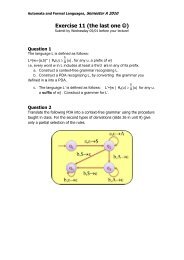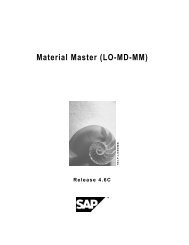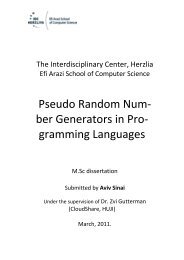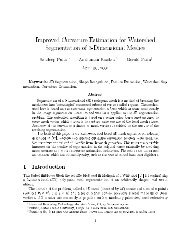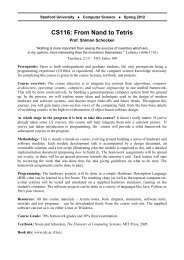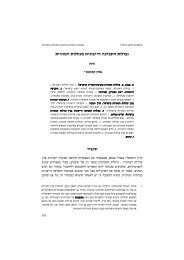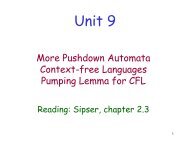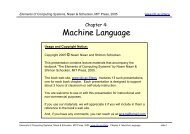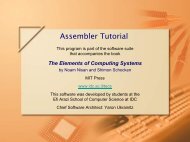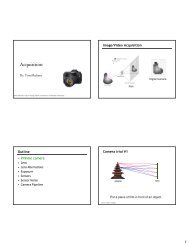Partitioning 3D Surface Meshes Using Watershed Segmentation
Partitioning 3D Surface Meshes Using Watershed Segmentation
Partitioning 3D Surface Meshes Using Watershed Segmentation
Create successful ePaper yourself
Turn your PDF publications into a flip-book with our unique Google optimized e-Paper software.
320 IEEE TRANSACTIONS ON VISUALIZATION AND COMPUTER GRAPHICS, VOL. 5, NO. 4, OCTOBER-DECEMBER 1999<br />
Fig. 17. Several subassemblies of the dart model isolated via region extraction.<br />
single vertex. In this manner, the region boundaries (edges)<br />
are preserved.<br />
Another area that can benefit from the use of the<br />
segmentation method proposed here is that of computeraided<br />
design. It is possible to read in a general mesh model<br />
without any knowledge of its structure save its basic<br />
connectivity and segment it and extract any desired regions<br />
using the user-specified threshold. Subparts can then be<br />
analyzed in detail and the model modified by modifying or<br />
deleting assemblies as required. These parts and assemblies<br />
can then be added to a database of such parts and<br />
recombined and reused in different configurations as<br />
needed. A surface mesh can be created using an interactive<br />
<strong>3D</strong> model generation tool and measurements and specifications<br />
for various subassemblies then generated from the<br />
segmented model. Fig. 17 shows several parts of the dart<br />
extracted from the model as a whole.<br />
6 CONCLUSIONS<br />
We have presented here a method of surface segmentation<br />
which uses a generalization of watershed regions to <strong>3D</strong><br />
meshes. The method can segment either isosurfaces of a <strong>3D</strong><br />
volume or surface meshes directly into regions that are<br />
bounded by higher curvature. The algorithm displays some<br />
sensitivity to the user-specified threshold. Varying the<br />
threshold allows for different levels of segmentation, the<br />
exact level depending upon the final application.<br />
One aspect of the system that would benefit from future<br />
work is the method of calculating curvature for surface<br />
meshes. Currently, the results obtained from segmentation<br />
of these meshes are prone to high frequency aliasing and<br />
Fig. 18. Mesh reduction on unsegmented and segmented surface. (a) Reduction by a factor of 100 on the unsegmented dart, (b) the vertex<br />
connectivity of the unsegmented reduction, (c) reduction by a factor of 100 on the segmented dart, (d) the vertex connectivity of the segmented<br />
reduction.


